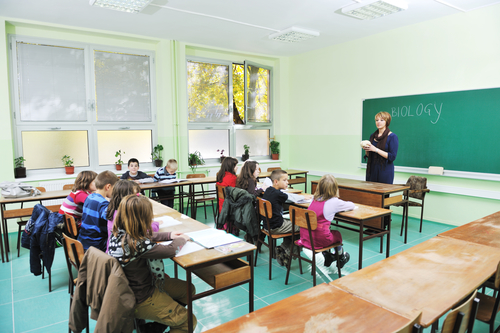
4 Ideas for Cultivating Vocational Skills at School
 Making the classroom resemble the workplace is tricky. The first issue is whether or not a classroom should feel like a workplace. Is the classroom meant to be a laboratory for learning, or a place to practice for particular jobs? Age is a consideration too, as vocational practice is more appropriate for high school juniors than kindergarteners. Choosing what kind of workplace to model is the next decision. This is naturally difficult because of the vast range of occupations students might go on to pursue. Available resources, schedule constraints, and curricular demands all influence how teachers can build vocational practice into instruction. Below are some ideas for how to help foster this.
Making the classroom resemble the workplace is tricky. The first issue is whether or not a classroom should feel like a workplace. Is the classroom meant to be a laboratory for learning, or a place to practice for particular jobs? Age is a consideration too, as vocational practice is more appropriate for high school juniors than kindergarteners. Choosing what kind of workplace to model is the next decision. This is naturally difficult because of the vast range of occupations students might go on to pursue. Available resources, schedule constraints, and curricular demands all influence how teachers can build vocational practice into instruction. Below are some ideas for how to help foster this.
1. Exploit Technology – Contemporary classrooms should be as connected as they can be. Among the numerous reasons for this is facilitating comfort with the technologies that make contemporary workplaces run. Many schools have been operating this way for years as of this writing, but others struggle because of what technology is available per school. Every effort should be made to have students receive, complete, and submit assignments electronically. They can research and collaborate using the devices they’re already carrying. Schools would be wise to embrace this reality. Arguments can be made for reducing reliance on technology, but in terms of fostering competitive employment skills, using it is better than fighting it.
2. Collaborate with the Community – This suggestion is stepping outside the walls of the classroom (and possibly beyond what a teacher alone can organize), but doing so might be necessary in some cases. High school vocational programs have dissolved in schools across the country. To provide opportunities for authentic vocational practice, schools must reach out to businesses in the community that can host internships and apprenticeships. Work-study programs that allow seniors to work for part of the day are nothing new. In the absence of true vocational programs, these are needed now more than ever. Most work-study jobs are likely to be in the service industry and might not teach trades, but even these opportunities provide experiences that can’t truly be replicated in school buildings.
3. Run a Workshop – Special education teachers who work with students with intellectual disabilities have been doing this for decades. Turning a classroom into a workshop requires much from the teacher, but if done well, the students can manage much of it themselves. For students with special needs in a small group setting, the classroom as a workshop makes sense. Students are assigned jobs, some of which happen in the classroom (taking calls, housekeeping, organizing instructional materials), others of which happen within the school community (making deliveries, working in the school kitchen or office, light custodial work). Sometimes teachers will turn classrooms into school stores managed by the students. To complete the sense of authenticity, students can fill out time sheets and even receive compensation in the form of additional privileges or coupons for community events. This is great for special education teachers, but general education teachers can do it as well. Organization might be more difficult because of the number of students and the requirements of the curriculum, but having vocational roles built in to the classroom can act as a management tool for students who complete assignments at varied paces.
4. Elaborate and Justify – Teachers are crafty people. Much of what is in this article is happening in schools right now and is working well. What students might need more than additional exposure to vocational practice are reminders of how what they’re doing in school and (perhaps more importantly) how they’re doing it is meant to resemble the way they will collaborate and complete work outside school. High schools in particular should be preparing students for the experience of post-secondary education as well as for the workplace. Going beyond answering the question, “Why do we need to learn this?” teachers should be explaining why students are learning the way they’re learning. During group activities, part of the directions should include a piece about the importance of committee work. During independent research, students should know why they need to be resourceful and capable of working remotely without direct supervision. Discussions of content, procedure, and connection to later practice shouldn’t be separate. Students should be familiar with why classroom activities happen the way they do.
While recreating a workplace environment in the school might pose difficulties, retaining some connection between learning and later practice is worthwhile. At the very least, students should know how methodology connects with future outcomes. The teacher’s job is making this connection genuine.
Written by Jeff Hartman



